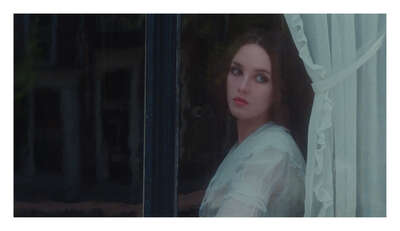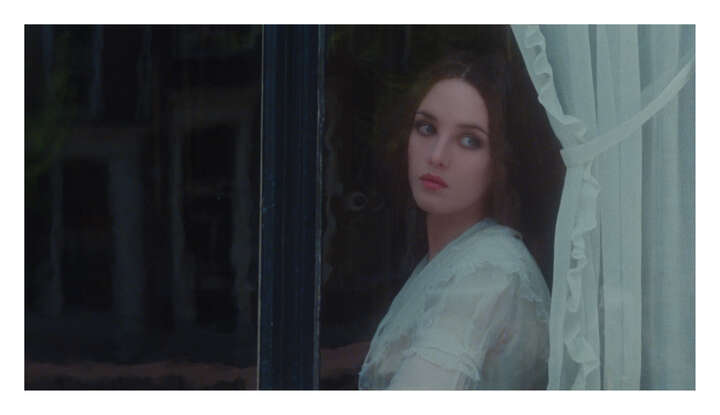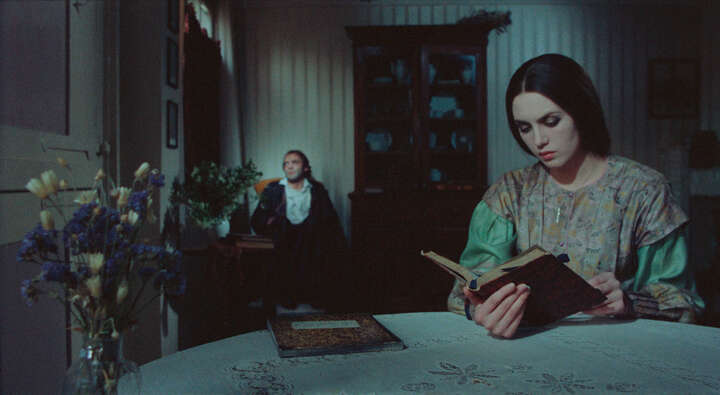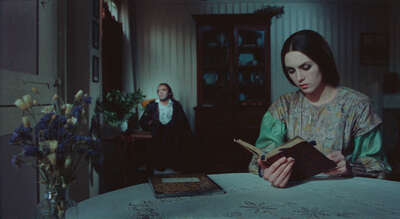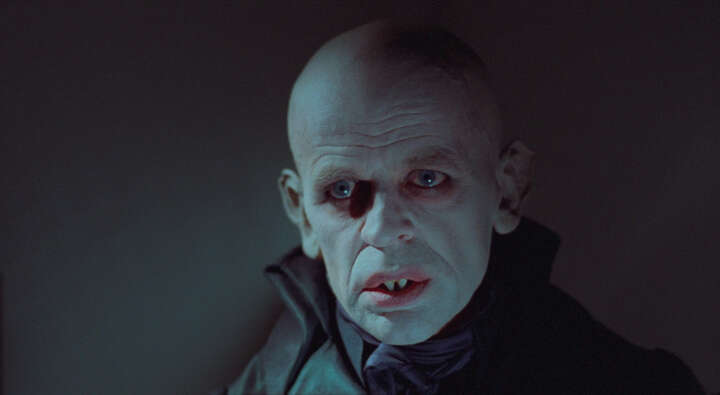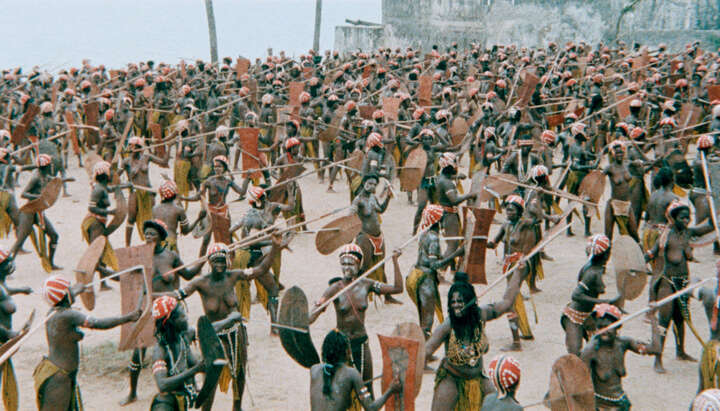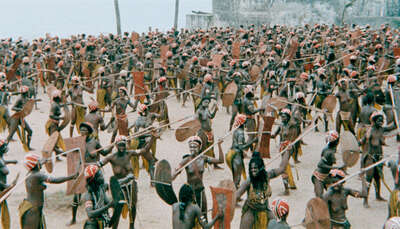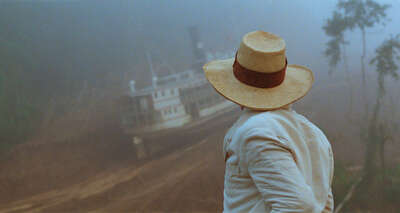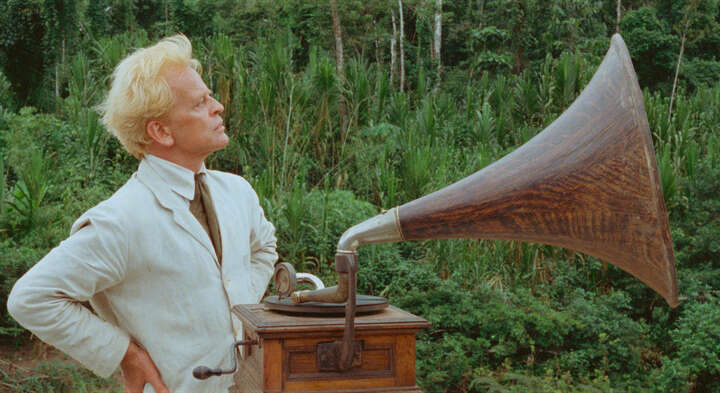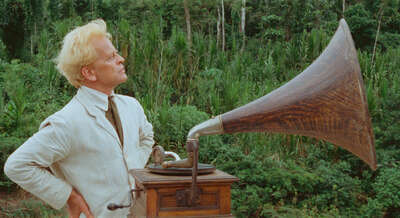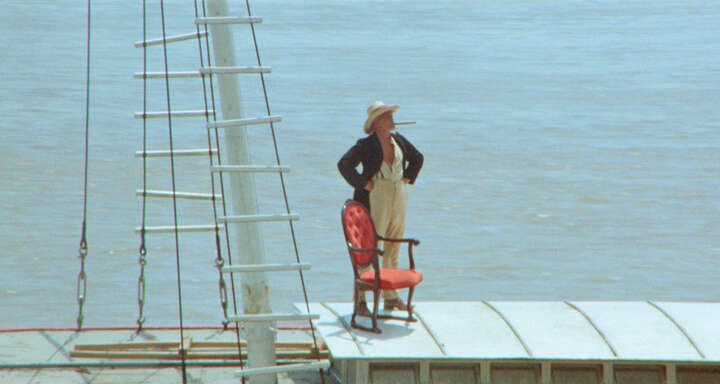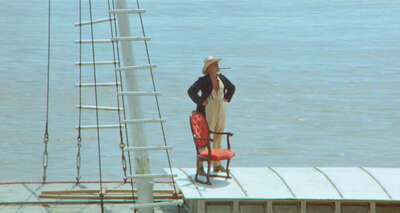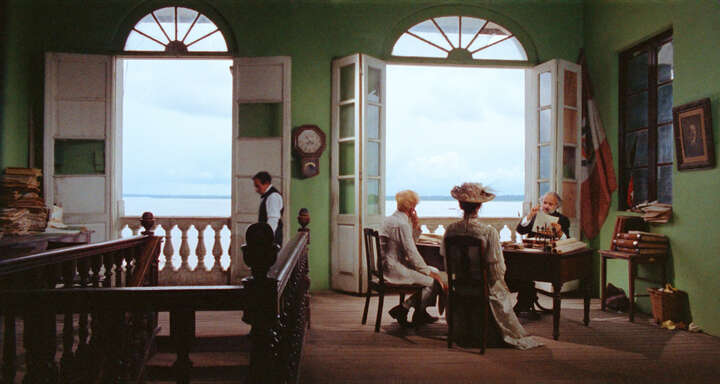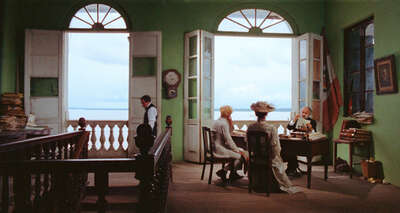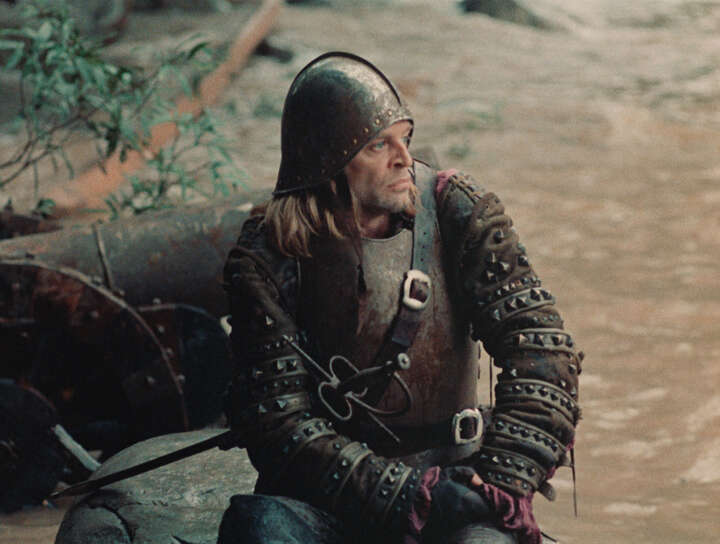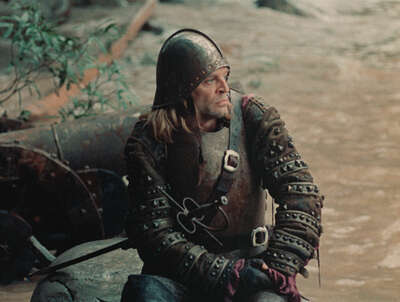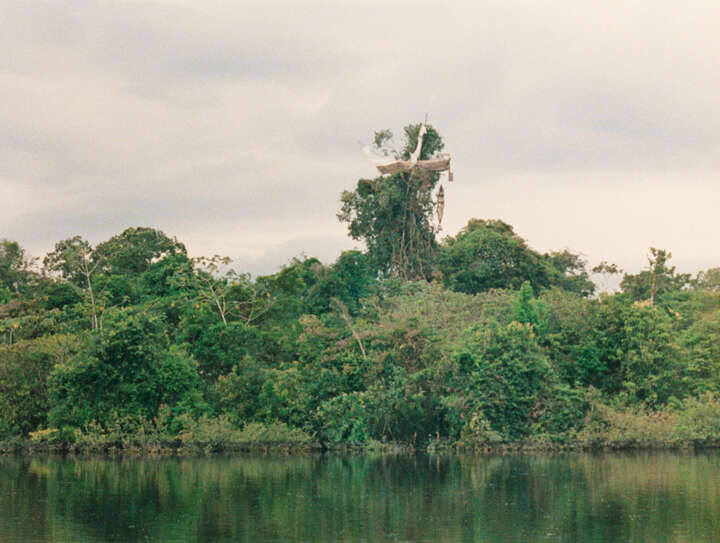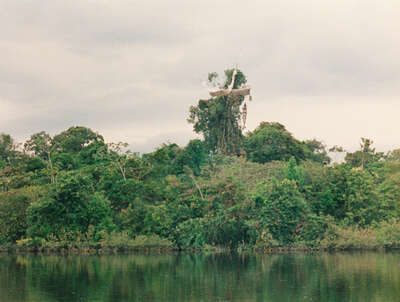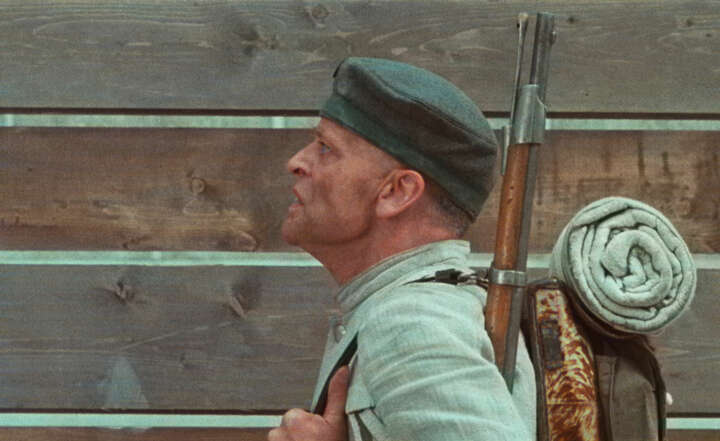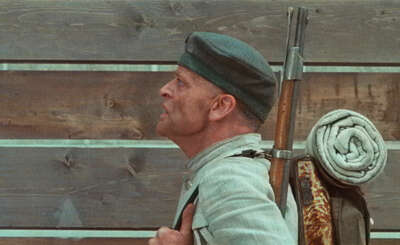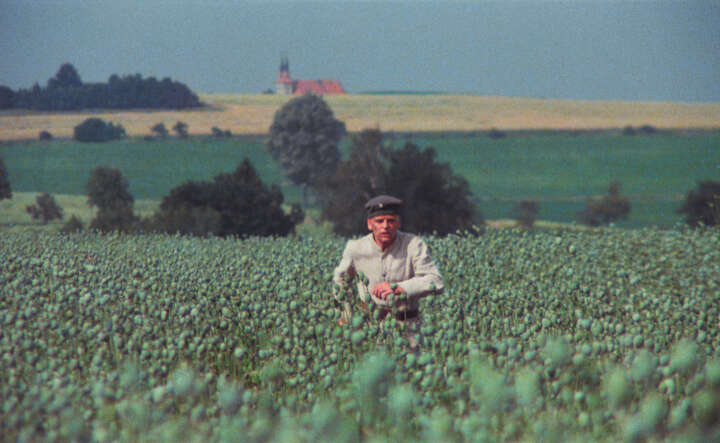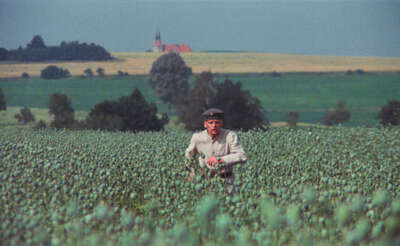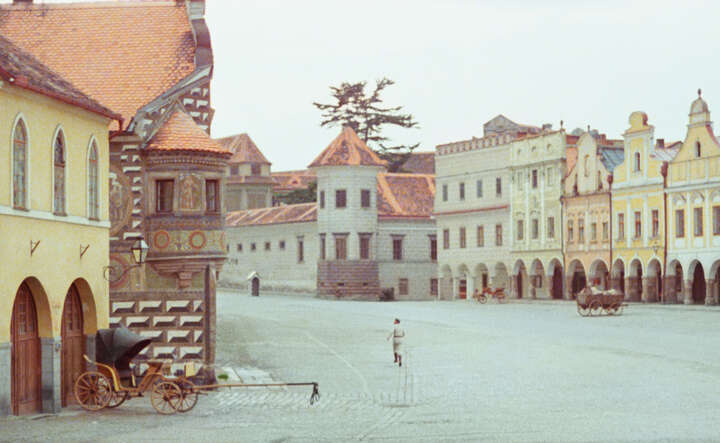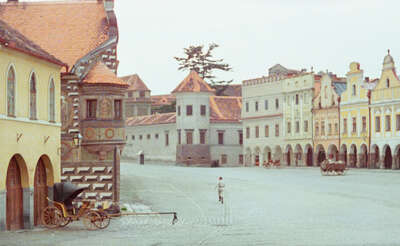Introduction
Borderline Experience
One constant in German director Werner Herzog’s work is without a doubt the tireless exhaustion of boundaries. For one it is the films’ stories about outsiders who frequently strive to make the humanly impossible possible, such as adventurer Fitzcarraldo (Klaus Kinski), who hopes to erect an opera house in the middle of the South American rainforest. And it is the films themselves, in which the director offers the viewer a singular exceptional experience. Plumbing our physical and mental boundaries is often reflected in hypnotic scenes, moments, and approaches that allow the viewer to take part in a deeper experience on the edge of the representable.
Herzog never tires of using films as a method of creating a state of exception. What is exceptional is that the director is capable of expressing the inexpressible in peaceful and powerful images. The precise compositions in which Herzog continually uses to portray the conflict between opposing individual and internal and external forces unfold in a visual language that does not devolve into chaos but rather gracefully creates its own order.
With his unique visual logic Herzog is able to make the sensually experiential fields of tensions that arise out of his recurring themes. For example, the tensions between mankind and nature in films such as Aguirre, the Wrath of God (1972) and Fitzcarraldo (1981/82). The tension might also be between the individual and authority, as is the case in Herzog’s 1979 screen adaptation of Georg Büchner, in which Klaus Kinski as Woyzeck battles the captivating architecture of a nineteenth-century garrison town like Don Quijote.
Despite the originality of Herzog’s aesthetic world, it is not without reference points. Herzog’s Nosferatu has as its roots Murnau’s classic 1921 film, which revolutionized visual, cinematic storytelling at the time. But Herzog leans not only on the aesthetic motifs of his predecessors but much more on the atmosphere and emotions of silent films, which Herzog transports with references to pre-Raphaelite and Victorian portrait painting without simply mimicking these methods of painting.
If it is in Herzog’s Nosferatu (1978) the young Isabelle Adjani who represents one pole of the tension of sexual desire in contrast to the invisible presence of danger, then it is Klaus Kinski as Count Dracula who represents the antipole. It ultimately required an actor of no less talent than Kinski to literally give Herzog’s liminal figure a face. Herzog found in Kinski an actor able to incomparably fill the screen while testing the boundaries of the body and mind. Kinski, whom Herzog portrays as a choleric man in his documentary My Best Fiend (1999), always represents the furthest extreme of the unfolding conflicts. These are expressed in the contrast of Kinski’s physiognomy to the geometry of the parade grounds in Woyzeck.
The LUMAS edition brings together a selection of prints from Herzog and Kinski’s collaborations that have been taken directly from the film negatives. In contrast to still photography, the unique compositions Herzog conceived in the film are perfectly preserved.
Bio
| 1942 | Born in Munich, Germany |
| 1942 - 1954 | crows up in Sachrang, Bavaria |
| 1954 | comes back to Munich |
| 1962 | First movie Herakles |
| 1963 | Founded his own produktion company Werner Herzog Filmproduktion in Munich |
| 1964 | Scholarship in Pittsburgh, USA, breaks it up after three days |
| 1968 | First movie Lebenszeichen |
| 1995 | Moves to the USA |
| Lives and works in Los Angeles, USA |
Awards
| 2006 | Directors Guild of America für Grizzly Man |
| 2005 | Venedig Filmfestspiele, Fipresci Award for The Wild Blue Yonder |
| Sundance Film Festival, Alfred P. Sloan Feature Film Prize |
| 1999 | San Francisco International Film Festival, Golden Spire für Little Dieter Needs To Fly
|
| São Paulo International Film Festival, Audience Award for Mein liebster Feind - Klaus Kinski
|
| 1997 | International Documentary Film Festival Amsterdam, Special Award form the jury for Little Dieter Needs To Fly
|
| 1993 | Melbourne International Film Festival, Grand Prix for Lektionen in Finsternis |
| 1984 | Deutscher Filmpreis, Filmband in Gold für Wo die grünen Ameisen träumen
|
| Gilde Filmpreis, Gilde-Filmpreis in Gold in the category German Film for Fitzcarraldo
|
| 1982 | Cannes Filmfestspiele, Award as best director for Fitzcarraldo
|
| Festival Internacional de Cine de Donostia-San Sebastián, OCIC-Award für Fitzcarraldo
|
| Festival Internacional de Cine de Donostia-San Sebastián, OCIC-Award for Fitzcarraldo
|
| 1981 | Gilde Filmpreis, Gilde-Filmpreis in Silber in the category German Film for Woyzeck
|
| 1978 | Deutscher Filmpreis, Filmband in Silber for La Soufrière - Warten auf eine unausweichliche Katastrophe
|
| 1976 | Le Syndicat Français de la Critique de Cinéma, Kritikerpreis for Aguirre, der Zorn Gottes
|
| 1975 | Cannes Filmfestspiele, Fipresci Preis, Grand Prix der Jury for Jeder für sich und Gott gegen alle (Kaspar Hauser)
|
| Deutscher Filmpreis, Filmband in Silber for Jeder für sich und Gott gegen alle (Kaspar Hauser)
|
| 1968 | Deutscher Filmpreis, Filmband in Silber, for Lebenszeichen |
